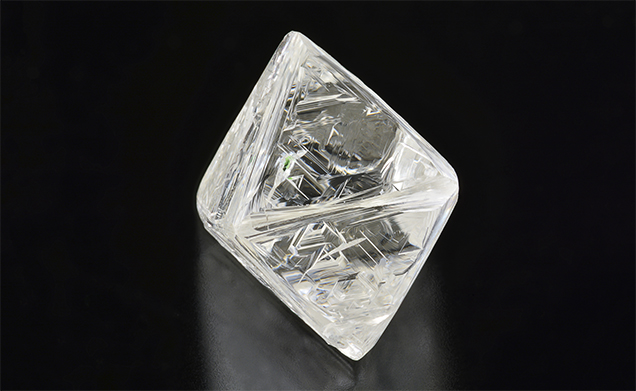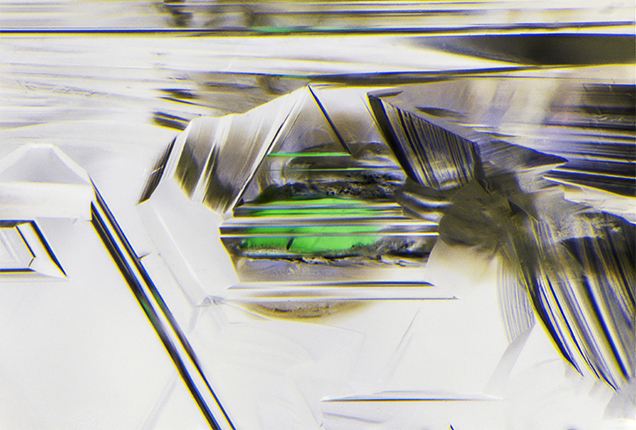Quarterly Crystal: Cr-Diopside in Diamond

Brightly colored mineral inclusions in diamonds are rare. Some examples of these rarities are dark blue kyanite, yellowish orange almandine-pyrope, and deep purplish red pyrope garnet. This year’s first Quarterly Crystal offering expands on this bright inclusion theme with a transparent colorless partially etched octahedron from the Kimberley mine in South Africa. Shown in figure 1, the diamond measures 7.59 × 6.59 × 4.79 mm and weighs 1.84 ct.
Situated along the edge of one of the octahedral planes, the diamond crystal plays host to a bright green transparent elongated mineral inclusion. Laser Raman microspectrometry was used to identify this included crystal as diopside, and the bright green color results from a trace amount of chromium.

As a diamond inclusion, chromium diopside is a medium to deep green transparent mineral with a vitreous luster. As shown in figure 2, it typically forms as rounded protogenetic mineral grains. Geologically, the presence of a Cr-diopside inclusion in a diamond is an indicator that the host diamond formed in a rock type known as peridotite.



